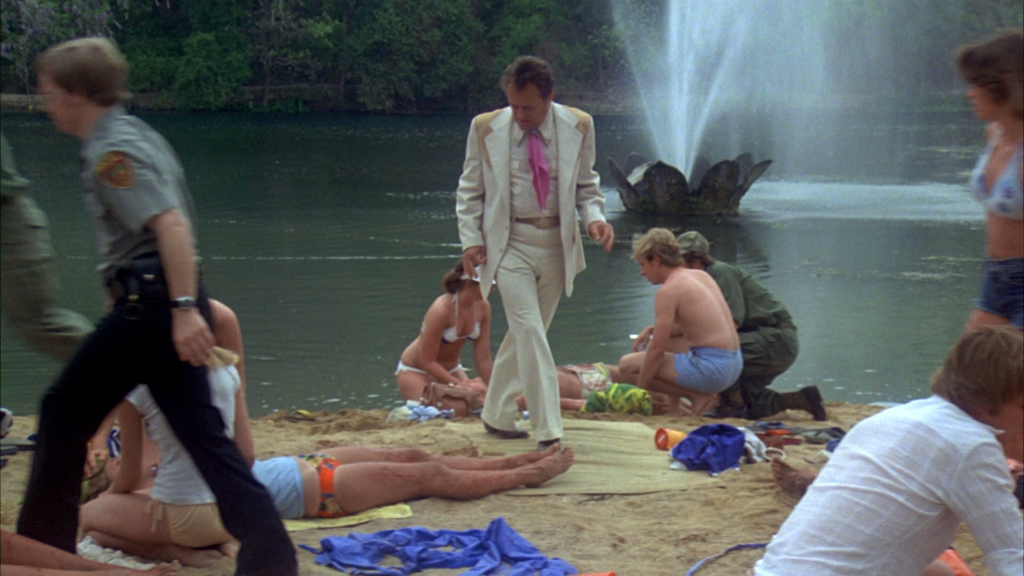
Joe Dante’s Piranha (1978) is a creature feature with its tongue planted firmly in its cheek. This quicke Roger Corman production was penned by John Sayles and combines the familiar tropes of the genre concerning ecological conservation and those of a cautionary tale of capitalism run amok. Dante’s passion for late fifties B-movies is unparalleled and he gets to make the most of it here.
Piranha‘s cheap thrills and reflexive gags make it a wholly unpretentious cash-in on Jaws (1976). Actually, because of its modest budget, Piranha is a more affecting reiteration of genre motifs than Jaws ever was or could have been. Unlike Steven Spielberg, Joe Dante and John Sayles harbor no delusions regarding the type of picture that they’ve made. Piranha scares the viewer one minute with its school of flesh eating fish only to tantalize them the next with lingering shots of beautiful people in their swimming attire. Jaws does the same things but glosses over its indulgent spectacles, preferring to keep up the illusion that Jaws is equivalent to some New Hollywood classic like Scarecrow (1973) or The King Of Marvin Gardens (1972).
One of Joe Dante’s greatest gifts as a purveyor of post-modern B-movie schlock is his ability to cast the right actor for the right role. Usually these parts are supporting character roles where the perfect actor is able to recall earlier performances by different players in similar roles while still bringing a fresh sense of self-deprecating irony to the part. In Piranha there are two such actors who each play wonderfully to form in their respective parts; one being Dick Miller and the other Keenan Wynn. Dick Miller is a regular in Dante’s film and appears to have had an innate understanding of the filmmaker’s aesthetic. Miller always plays a kind of “seen better days” quasi-tough guy who is more bark than bite. Wynn, on the other hand, plays the gruff old sage he often played in the seventies but with an air of pretension as if he weren’t a human being at all but rather just some sort of narrative device.
Dante and Sayles also work in some stop-motion animation, preserving one of Dante’s early trademarks. Piranha is a kind of cornucopia of B-movie strategies, effects, visuals, and plot lines all designed to intersect in one terribly bloody climax. So of course to arrive at that moment the filmmakers must litter Piranha with scientific experiments, evil businessmen, a mountain man, an innocent family, a love story, and some not very wholesome summer camp antics. Piranha is a roller coaster ride through classic drive-in movie mayhem (propelled by Pino Donaggio’s music) in much the same was as Hollywood Boulevard (1976) but with more narrative structure and clearer visual organization.
Piranha isn’t just Dante’s film though, it’s a Roger Corman production. That being said it should come as no surprise that the climactic piranha attack is a drawn out affair showcasing human flesh and violent death as gratuitously as possible. As is the case with Humanoids From The Deep (1980), Piranha must to forego some of its playful artistry and “messaging” to appease Corman’s mandates. The movies are a business after all.
